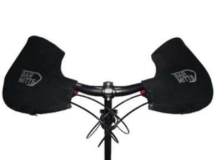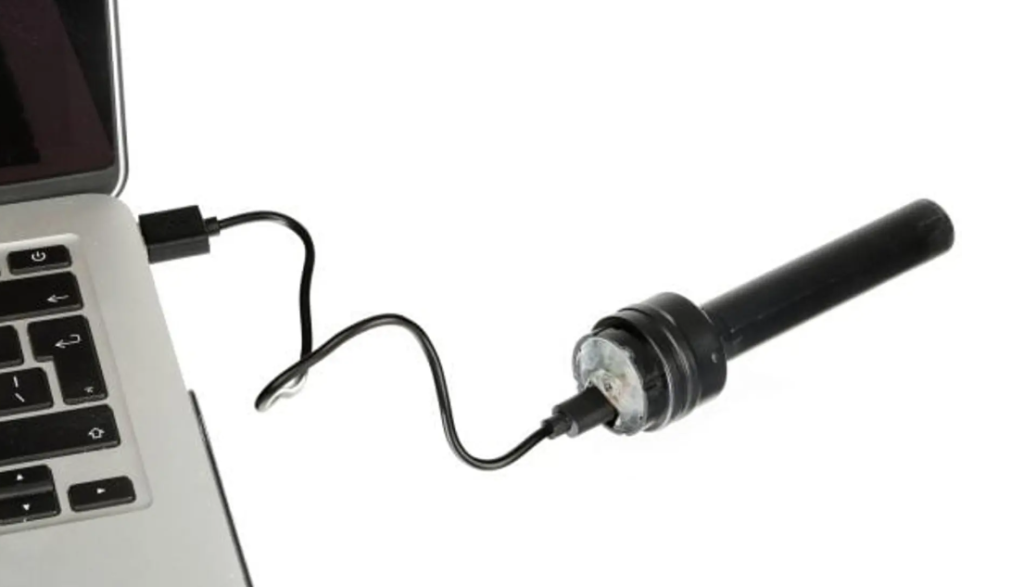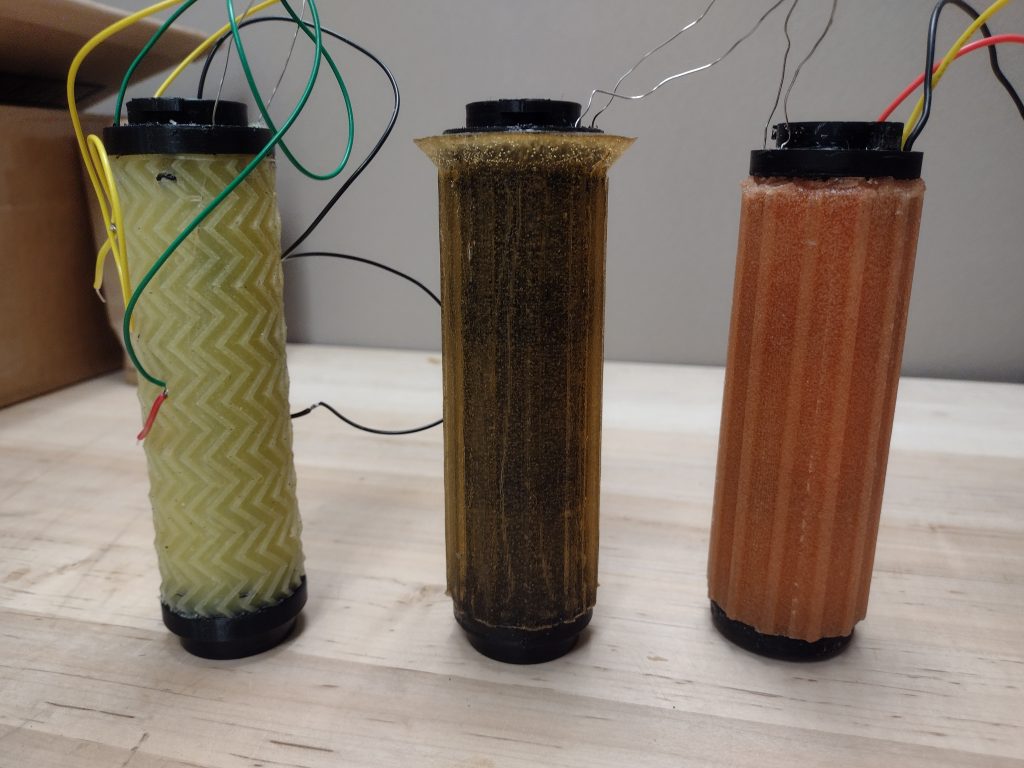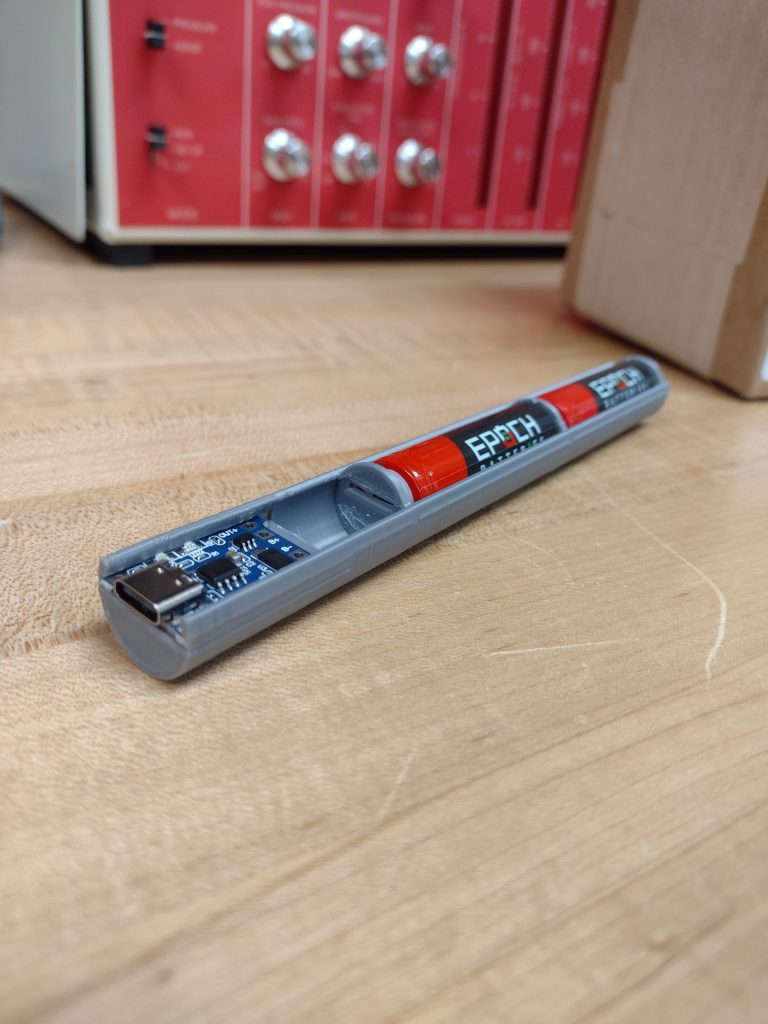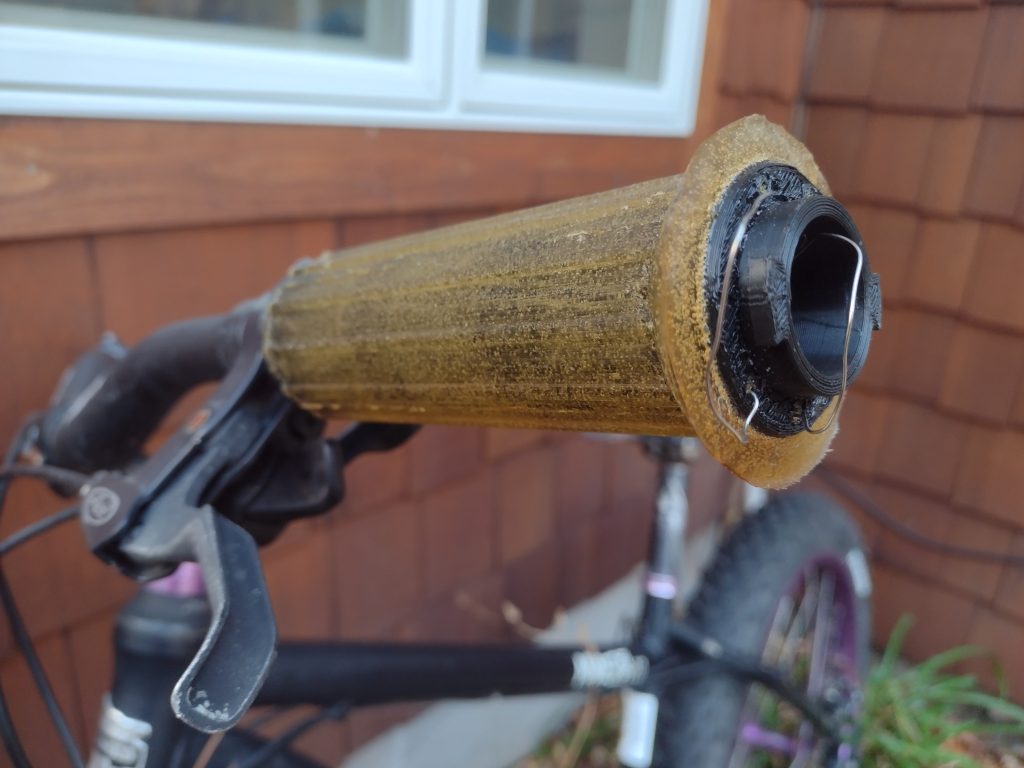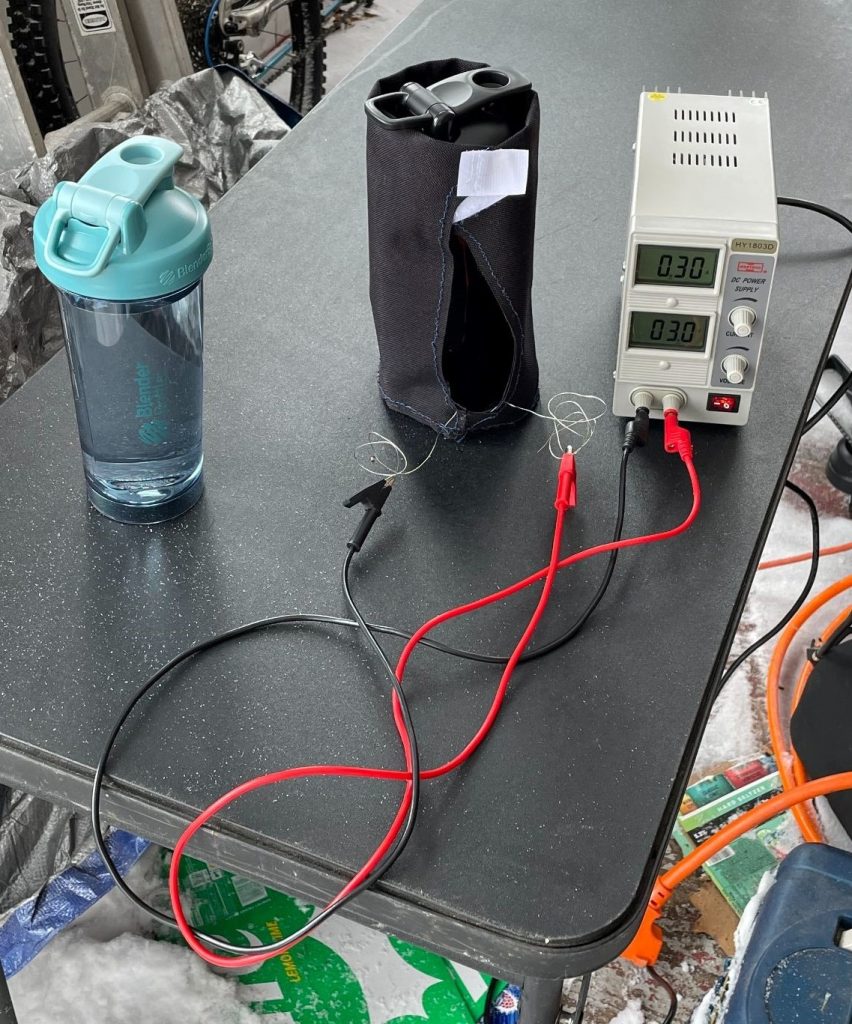The goal of this project is to create a cost effective and less bulky method to extend the bicycle riding season as fat tire bikes become more popular and mainstream, and mountain bikers extended their riding season throughout the winter. Our goals include:
- Give another possibility for heated contact points while minimizing the cost
- Give the rider a comfortably warm hands with little hassle
o Heated to 100 degrees
o 5 hours battery life
o Simple recharging
o Installation/removal process less than 5 minutes
- Minimize bulkiness
o Have batteries placed where they will not be in the way
o Have no wires outside the grips to minimize any wires getting caught or damaged
o Heated grips combined weight of less than 1200 grams (with batteries)
o Installation/removal less than 5 minutes
Bulky Bar Mitts vs. Electric Handle Bar Grip Core
The main parts of this project includes a 3D printed mold of of the handle bar grips, a resin printed frame where the heated material will be wrapped around and resin poured over to create the grips. Lastly, the electrical components will be housed inside the handle bar in a 3D printed sled.
Below is a picture of the proof of concept bench testing.
Most recently the Heated Grips were installed on a team members fat bike for rider testing. Further testing will be conducted and includes how long the battery’s will last on the different temperature settings, how durable the grips are, more rider testing for overall function and comfortability. In addition to the heated grips, the team has started working on creating a heated water bottle jacket to prevent winter rider’s water bottles from freezing while riding in below freezing temperatures.
Spring 2023 Update
The Hot Pawz team continued to make great strides toward their final goal this semester. One of the team’s big mile stones this semester is creating two new grip models based off of results of from initial testing. The team was also able to test the performance of the water bottle sleeve with ideal power input. Along with testing the performance, the team has also created 5 2d fabric patterns of the water bottle sleeve for prototyping.
Heated Grips Spring 2023
As stated above the team has made great progresses in the heated grips portion of the project. The team immediately started on their 4th prototype after receiving feed back from rider testing over winter break. From the feed back, the team agreed that the softer grip was easier on the rider and felt more comfortable over all. The team also revised the grip pattern so rider would be able to grab the grips better even if the grips were are covered in snow. A photo of the new grip pattern can be seen below.
As seen in the photo the team changed from thick vertical humps to a diamond array pattern. The team agreed that the diamond pattern would allow snow build up to be broken up and be removed easier and the riders hands would catch more than vertical hump. To go with the new grip pattern the team also created a new version of the grip core that house the electronics and hold the nichrome wire. The team decided to use tighter hook pattern on half the grip and a looser pattern on the other half. The two different pattern size is because the majority of the contact is only on the top of the grip, where the rider places their palms. This will also cut down on the amount of nichrome needed and allows the team to input more power to reach the desired heat if necessary. A CAD photo of the new core can be seen below.
The last few improvements to the heated grip this semester included testing the hardness of the epoxy used for the grip. This testing included 4 different 2-part epoxy mixtures, equal parts mass, equal parts mass with dye, equal parts volume, and equal parts volume with dye. Our results showed that the mixture of equal parts mass with no dye was the softest. From these results the team plan on making the future prototypes with this mixture to get the comfiest grips possible for the rider. Lastly, the team performed durability testing on the grips to make sure they will not break if dropped. Results have not yet been finalized for the durability testing.
Heated Water Bottle Sleeve
The major mile stones of the heated water bottle sleeve was testing the performance of a prototype with ideal power input and creating multiple 2D fabric patterns to test out different securing methods for the water bottle. The team tested the prototype two different nights, one warmer day roughly 36 degrees Fahrenheit and one colder day roughly 13 degrees Fahrenheit. On both nights of testing, the water bottle sleeve had an input of 3 volts to heat up the nichrome in the sleeve. From these experiments the team found out that on a warmer day the water in the water bottle will stay at roughly 30 degrees Fahrenheit and on a colder day the water will drop down to roughly 10 degrees Fahrenheit, with some ice forming but not freezing entirely. These results prove that with an constant input of 3 volts the water bottle sleeve would be able to prevent the complete freezing of water at roughly 13 degrees Fahrenheit for 5 hours. a photo of the testing experiment is shown below.
In addition to the testing the team improved on the design of the water bottle sleeve. The team decided to add bias tape to the edges of the water bottle sleeve. The team agreed that bias tape would be very beneficial for the over all design. The main benefit of using bias tape is protecting the fabric from fraying. Bias tape is used to keep the edges of cut fabric from pulling apart over time and making the over all product more durable. The team’s most recent protype with the bias tape on water bottle sleeve can be seen below.
Moving forward the team plans to make 5 more prototypes. Each prototype will have a different method to secure the water bottle. At the moment the team also plans on placing the power source for the heat the water bottle on the side of the sleeve by incorporating a pocket. The team hopes to be able to perform rider testing in the upcoming semester.
Fall 2023
A custom circuit was needed to keep the battery module within the tight space requirements as well as lower the overall cost of the product. The board houses an ATTiny204 microcontroller, and battery charging circuit, a USB-C receptacle, a output FET, a small pushbutton, and an RGB LED.
A silicone mold for casting grips was also created. This mold makes removing the cured resin grips significantly easier than the previously used FDM printed molds. It also has the advantage of being easily reusable.
